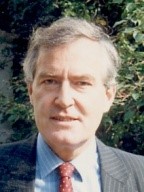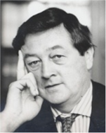
Note from Master Dawn Oliver
In 2020 Stephen and I received very good advice from an American lawyer friend. Everyone should write a summary of their life in case such a thing was needed. What follows are the law-related sections of Stephen’s ‘obit’, as he called it.
1962 to 1964: Preparing for the Bar
The Bar finals course at Gibson & Weldon on Chancery Lane took up the first part of 1963. It provided all the knowledge one needed to pass the exams in September. What was more, it was the first time I had found law at all interesting. Lunches and dinners in the Middle Temple were where I built up the network of friends who all had the Bar as our common aspiration. In due course, those colleagues included Dawn (then Taylor). She had arrived from Cambridge in 1964 and we married in 1967.
I’d met Geoffrey Veale (Veale J) when I had chaired the Oriel College Law Society. He asked me to be his ‘marshal’. I joined him in April until July 1963 for the Trinity Term on the Oxford and Chester Circuit. We stayed in the Judges’ Lodgings at Reading, Oxford, Gloucester, Hereford, Worcester and Shrewsbury. It was law in action and my first real experience of it. The listing and programming of the trials were done by the clerk to the assize who travelled with us. The judge had a lugubrious clerk called Hensman, a butler called Pinnock and a cook. Hensman and I wore morning coats and black top hats as we travelled from the lodgings to the court. I sat alongside the judge and had the chance to read the papers and to watch everything and discuss it all with Geoffrey Veale.
Most of August was spent in London revising and I sat and passed the Bar finals in September.
My first pupillage, from October 1963 to March 1964, was in Lincoln’s Inn with Leslie Morris Smith. He was a company law junior with a quiet scholarly manner. His previous (and only other) pupil had been Margaret Thatcher. I left with a secure grasp of company law. Then it was six months in tax chambers with Michael Nolan, in Pump Court, Temple, to whom I had been introduced by Philip Shelbourne (who had become a director of Rothschilds in 1960). Michael Nolan’s modest and sensible approach to tax issues had earned him a large following. To my surprise, I enjoyed tax law. I was well aware I was no scholar, but I found I could get into the practicalities of one problem after another. The day my second pupillage was over, the then head of chambers, Fred Bucher QC, announced that he was leaving to become a director of Lazards, the merchant bank, and that left a space in the chambers for me.
1964 was when a Labour Government, with Harold Wilson as Prime Minister and Callaghan as Chancellor of the Exchequer, was elected after 13 years of Tory rule. New taxes on capital gains, land development and company profits were introduced. Outside the Bar, there were almost no tax lawyers, and accountants then regarded tax as a necessary evil. I was well placed and, from the moment I was taken on as a tenant, there was devilling to be done.
1965 to 1980 – Development of all-round tax practice
Devilling developed into work directly for clients. I became junior to silks, in and out of chambers, in litigation ranging from purchase tax and death duties to Privy Council and oil company appeals. I edited two editions of Potter & Monroe’s Tax Planning. Major changes in tax law, made during the years of Labour administration, (capital gains and corporation tax, selective employment tax, development land tax and capital transfer tax) called for explanation and interpretation. I did a great deal of lecturing to practitioners’ societies all over the country. By the time Dawn and I were married (in January 1967), I was developing a practice, both advisory and litigation. I also became a door tenant in chambers in Manchester and developed a following of solicitors in the North. I took on everything with the remotest connection to tax and made no attempt to specialise.
During the first half of the 1970s the range and volume of my work increased considerably. I served on committees of the International Bar Association, the Bar Council and the Law Society. I was particularly interested in improving the tax appeal system. I was actively involved in groups pressing for more effective reliefs from tax for expenditure on ‘heritage’ properties.
A great deal of my litigation practice was before the Special Commissioners. I appeared in all courts and was often led by almost all the prominent silks at the Chancery and Tax Bars. In the years leading to my taking silk in 1980, tax issues arising from North Sea oil exploitation projects, mergers and acquisitions and variations of trusts became major parts of my practice. Working in Pump Court in the heart of the London Bar created an awareness of what was going on in other fields of the law and led to more and more diversification of my work. I served on the Finance Committee of the Middle Temple for several years.
1980 to 1991: Silk and Head of Chambers – Recorder sitting on criminal trials – Middle Temple Bencher
The 1980 Maundy Thursday announcement of silk appointments listed me as the lowest but one, immediately below Kenneth Clark MP (who became Home Secretary). Two years then passed, finishing off a large ‘bow-wave’ of junior work and taking on silks’ work. More heavy work came my way when, in 1983, Michael Nolan was appointed to the High Court. Litigation throughout the UK and in the Privy Council, representing taxpayers and revenue authorities, became a large part of my work. House of Lords cases of special interest were Furniss v. Dawson (tax avoidance) in 1983 and Pepper v. Hart (whether concessionary fees for education of children of staff should be taxed as emoluments) in 1991. Where possible, I diversified. I sat on committees of the Law Society and the Institute of Fiscal Studies concerned with the tax appeal system and the judicial approach to tax avoidance. Much of my work was concerned with the tax implications of the Thatcher changes and particularly the ‘big bang’ relating to City institutions.
From 1986, I sat as an assistant recorder and then as recorder trying criminal cases in London and on the South Eastern Circuit. I also sat as a Deputy High Court judge in the Queen’s Bench Division.
I was elected a Bencher of the Middle Temple in 1987.
In 2008, I was Reader of the Middle Temple. My Reading was based on Dowland’s performance in the Hall on Candlemas almost exactly four hundred years earlier. The Reading was followed by a rope artist, performing on a rope suspended from the lantern in the Hall’s roof and accompanied by a solo violin (Simon Blendis) playing Dowland and music inspired by him.
1991 to 2011: On the bench
After 11 years as a silk, during which I had taken on the sensitive role of head of chambers, I turned to full-time judging. I sat for five months on criminal trials at the Inner London Crown Court. I then took on two separate jobs. One was Presiding Special Commissioner; this covered the heavy ‘direct’ tax (e.g. income and corporation tax) appeals. The other was President of the VAT Tribunals. Those two tribunals had separate panels of judges and separate rules. The Special Commissioners sat in private and never revealed their rulings, save to the parties. The VAT Tribunals sat in public, and all their decisions were published.
Change came from three directions. The first was the public interest in justice being seen to be done. That led to the Special Commissioners giving open access to all their hearings and publishing all decisions. This produced an improvement in the standards of the hearings and the quality of the decisions. The interest of the tax profession became much closer, and the judging work attracted some very impressive practitioners. Second, the impact of EC legislation on the UK law was becoming stronger and more pervasive as were European Convention of Human Rights principles. These added new dimensions to our procedures and to our interpretation of the law; and our jurisdiction had to be widened to cover customs and anti-dumping duties and topics like the Endangered Species Regulations. The result was a high proportion of UK references to the European Court of Justice coming from us. The third move for change came from the political pressures to rationalise the many tribunals handling, like us, disputes between subject and state. From 1997 onwards, the aims were to bring all these tribunals into line with more or less similar procedural rules and similar ways of recruiting and selecting judiciary. That led to the establishment, in 2008, of the First-Tier and the Upper Tribunals.
As senior first-instance tax judge, I was at the centre of all those changes, working closely with the Lord Chancellor’s Department and its successors as well as with Lord Justice Carnwath (as he then was). I was all the more involved on account of my having taken on the newly created roles of President of the Financial Services and Markets Tribunal (in 2002), President of the Claims Management Tribunal (in 2004), and President of the Pensions Regulator Tribunal (in 2005). These involved appeals against regulatory decisions of the relevant Regulators. All those tribunals covered the separate legal systems of England and Wales, Scotland and Northern Ireland and required each tribunal to be smoothly piloted into the new structure that took effect in 2008. By then the volume of heavy work, particularly in tax cases, had increased enormously, as had the need to train and supervise the judiciary. To ease the pressure, I stopped sitting as a criminal judge in 2004.
2011 onwards
I continued to sit part-time until 2013. I rejoined my old chambers as an alternative dispute resolution member and conducted mediations whenever required. I remained fairly close to the tax system. For several years I was a trustee of TaxAid, a charity that provides advice and support for vulnerable taxpayers. I have continued to actively campaign for financial support for TaxAid and its fellow charity Tax Help for Older People.
In 2011, Dawn was Treasurer of the Middle Temple. I had the so far unique pleasure of spending the year as the Treasurer’s husband and enjoying all the celebrations and visits that that involved. We have been living in Blackheath most of the time and in Aldeburgh for the rest of it. Our children and grandchildren all live close by in London.
April 2020
Stephen died at home, with his family round him, on Monday 8 April 2024, peacefully and free of pain.
By Master Dawn Oliver



